#Máel Sechnaill
Explore tagged Tumblr posts
Text
Celtic Mythology | Five Sacred Guardian Trees of Ireland
Tree lore is a suspected ancient school of knowledge with roots stretching back into our earliest symbolic imaginations. The Tree is a common universal, archetypal symbol that can be found in many different traditions around the ancient world. Trees are symbols of physical and spiritual nourishment, transformation and liberation, sustenance, spiritual growth, union and fertility. The Guardians of…

View On WordPress
#Ancient#Ash#Bile Tortan#Cloughlea#Co. Wicklow#Craeb Daithi#Craeb Uisnig#Daur#Derry#Doire#Eó Mugna#Eó Ruis#Five Celtic Guardian Trees of Ireland#Gerry Chaney Photography#High King of Ireland#Irish Annals#Magh Adhair#Manor Kilbride#Máel Sechnaill#Oak#Sidhe#Yew
22 notes
·
View notes
Text
MAEL SEACHNAILL MAC DOMNAILL LOOKED RATHER LONELY ON SAINT STEPHEN'S DAY REF-226383-1
His great victory at the Battle of Tara against Olaf Cuaran in 980 resulted in Gaelic Irish control of the Kingdom of Dublin.
A SCULPTURE BY JAMES McKENNA Irish sculptor, James McKenna, was born in Dublin on the 21st June 1933. I visited the area in order to photograph this on Christmas Day but because of of weather conditions I was unable to use my camera so I had no option but to wait until St Stephen’s Day. This area, in Trim, on the banks of the River Boyne has improved over recent years but it is still a bit…
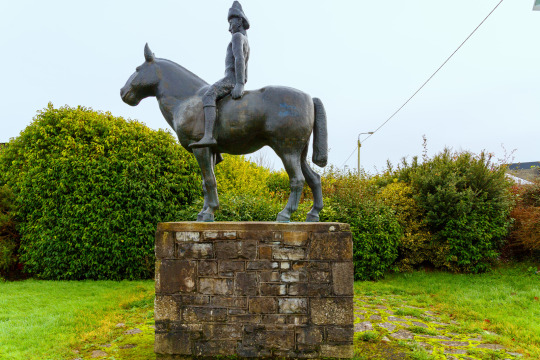
View On WordPress
#5D Mk3#5DIII#Battle of Tara#canon#Christmas Day#county meath#Fotonique#High King of Ireland#Infomatique#Irish sculptor#James McKenna#King of Dublin#King of Mide#Máel Sechnaill II#Máel Sechnaill mac Domnaill#Máel Sechnaill Mór#Olav Cuarán#River Boyne#Sculpture#Trim#William Murphy
0 notes
Text

Birthday sheep!!
My birthday was months ago but I just realised that I haven’t updated you all on the new members of the fold.
This is Máel Sechnaill mac Máele Ruanaid and Bríde.
Máel Sechnaill was a high king of Ireland in the 9th century, best known for his campaigns against the Vikings, and being the first person to be named King of all Ireland before his death rather than after.
Bríde is both the Irish Goddess of Fire and the female patron saint of Ireland. Very fitting post as it is St Brigid’s day tomorrow (also known as the festival of, Imbolc) I will make an Imbolc post tomorrow- as it is very important to us (lambing season 🐑🐑🐑🐑)
#sheep#sheep cult#ireland#irish history#vikings#st brigid#imbolc#paganism#shaun the sheep#yes I’m tagging that again#it gets me views#I need to spread the agenda#birthday
5 notes
·
View notes
Text
As promised my Everything Everywhere All at Once AU
When I finally watch Everything and it was a bit slow at first, but dear lord it truly did deserve all the awards it got!
So I of course still stuck in BTTF mode made me think of a crossover, especially because the movie talks about parallel universes made by different choices.
I’m going to put this under read more in case people don’t want to be spoiled, seriously go watch the movie!
If you don’t mind spoilers a quick run down. Evelyn and Waymond are a married couple who are currently being audited by the IRS and there isn’t a lot of love between them. Waymond is wanting to serve a divorce to basically force her to talk about their marriage, he still really loves her but he feels like he is losing her. They have a daughter named Joy, who doesn’t really connect with her mom. I mean I may go into a full script telling if I don’t finish. So it is a Waymond from another universe talking to Evelyn that can stop the evil known as Jobu who is Joy. Joy/Jobu can see and feel EVERY SINGLE UNIVERSE AT THE SAME TIME, can kind of mess with a person. Joy/Jobu wants Evelyn, now Evelyn is finding a way to defeat Jobu so she can save her daughter.
So first I was thinking Joy/Jobu has the same energy as the fandom likes to see for Marlene. But then I was thinking I can see kind of see Marty or Jennifer as Evelyn from the broken hand timeline. But I truly can’t see them as Evelyn and Waymond.
Then I of course was like Marty as Joy/Jobu, with him seeing how a choice can change a timeline, he is a good fit. I can 100% see George and Lorrine from the Twin Pines timeline to be Evelyn and Waymond.
First I wanted George to be Evelyn, so to parallel the whole mother/daughter with father/son. If you watch the movie George and Waymond are cut from the same cloth. And there is one monologue Waymond does about his kindness made me cry.
And Lorrine fits as Evelyn with the stubbornness and wants her child to call more and be more apart of the family and not approving of the SO.
Also the audit lady could be Biff cause it is funny that the audit lady in another universe is like a acolyte to Jobu. So Biff as an acolyte to Marty is funny to me.
Also no clue how Doc would fit into this. Maybe as a new part from the movie? Like alternate George explains to Doc and he gets it. So when Marty, who I’m calling Máel Sechnaill (it is pronounced Maw-il Shakh-nel), appears and alternate George gets forced back, Doc can help Lorraine. Let’s be real Doc would want to save Marty from this.
Last thoughts is George saying how his kindness isn’t a weakness, it is his strength, while also praising Lorraine’s own strength.
Lorraine saying, ‘I’m learning to fight like you.’ To George in the climax.
Just Marty in a lot of Jobu’s styles.
#back to the future#bttf#marty mcfly#eeaao#everything everywhere all at once#Back to the future x everything everywhere all at once#lorraine baines#george mcfly
9 notes
·
View notes
Text
A Palimpsest of Irish Architectural History
Descended from the late 10th century High King of Ireland Máel Sechnaill mac Domnaill, for much of the period following the Norman invasion, the O’Melaghlins (later McLoughlin) were a dominant family in what is now Westmeath. As such, they built various fortified residences for themselves, including the core of what is today called Moate Castle: the town of Moate derives its name from the motte…

View On WordPress
6 notes
·
View notes
Text
Events 7.10 (before 1950)
138 – Emperor Hadrian of Rome dies of heart failure at his residence on the bay of Naples, Baiae; he is buried at Rome in the Tomb of Hadrian beside his late wife, Vibia Sabina. 420 – Having usurped the throne of Emperor Gong of Jin, Liu Yu proclaims himself Emperor of the Liu Song dynasty. 645 – Isshi Incident: Prince Naka-no-Ōe and Fujiwara no Kamatari assassinate Soga no Iruka during a coup d'état at the imperial palace. 988 – The Norse King Glúniairn recognises Máel Sechnaill mac Domnaill, High King of Ireland, and agrees to pay taxes and accept Brehon Law; the event is considered to be the founding of the city of Dublin. 1086 – King Canute IV of Denmark is killed by rebellious peasants. 1212 – The most severe of several early fires of London burns most of the city to the ground. 1290 – Ladislaus IV, King of Hungary, is assassinated at the castle of Körösszeg (modern-day Cheresig in Romania). 1460 – Richard Neville, 16th Earl of Warwick, defeats the king's Lancastrian forces and takes King Henry VI prisoner in the Battle of Northampton. 1499 – The Portuguese explorer Nicolau Coelho returns to Lisbon after discovering the sea route to India as a companion of Vasco da Gama. 1512 – The Spanish conquest of Iberian Navarre commences with the capture of Goizueta. 1519 – Zhu Chenhao declares the Ming dynasty's Zhengde Emperor a usurper, beginning the Prince of Ning rebellion, and leads his army north in an attempt to capture Nanjing. 1553 – Lady Jane Grey takes the throne of England. 1584 – William I of Orange is assassinated in his home in Delft, Holland, by Balthasar Gérard. 1645 – English Civil War: The Battle of Langport takes place. 1668 – Anglo-Spanish War (1654–1671): Notable Buccaneer Henry Morgan with an English Privateer force lands at Porto Bello in an attempt to capture the fortified and lucrative Spanish city. 1778 – American Revolution: Louis XVI of France declares war on the Kingdom of Great Britain. 1789 – Alexander Mackenzie reaches the Mackenzie River delta. 1806 – The Vellore Mutiny is the first instance of a mutiny by Indian sepoys against the British East India Company. 1832 – U.S. President Andrew Jackson vetoes a bill that would re-charter the Second Bank of the United States. 1850 – U.S. President Millard Fillmore is sworn in, a day after becoming president upon Zachary Taylor's death. 1877 – The then-villa of Mayagüez, Puerto Rico, formally receives its city charter from the Royal Crown of Spain. 1882 – War of the Pacific: Chile suffers its last military defeat in the Battle of La Concepción when a garrison of 77 men is annihilated by a 1,300-strong Peruvian force, many of them armed with spears. 1890 – Wyoming is admitted as the 44th U.S. state. 1921 – Belfast's Bloody Sunday occurs with 20 killings, at least 100 wounded and 200 homes destroyed during rioting and gun battles in Belfast, Northern Ireland. 1924 – Paavo Nurmi won the 1,500 and 5,000 m races with just an hour between them at the Paris Olympics. 1925 – Scopes Trial: In Dayton, Tennessee, the so-called "Monkey Trial" begins of John T. Scopes, a young high school science teacher accused of teaching evolution in violation of the Butler Act. 1938 – Howard Hughes begins a 91-hour airplane flight around the world that will set a new record. 1940 – World War II: The Vichy government is established in France. 1940 – World War II: Six days before Adolf Hitler issues his Directive 16 to the combined Wehrmacht armed forces for Operation Sea Lion, the Kanalkampf shipping attacks against British maritime convoys begin, in the leadup to initiating the Battle of Britain. 1941 – Jedwabne pogrom: Massacre of Polish Jews living in and near the village of Jedwabne. 1942 – World War II: An American pilot spots a downed, intact Mitsubishi A6M Zero on Akutan Island (the "Akutan Zero") that the US Navy uses to learn the aircraft's flight characteristics. 1943 – World War II: Operation Husky begins in Sicily. 1947 – Muhammad Ali Jinnah is recommended as the first Governor-General of Pakistan by the British Prime Minister, Clement Attlee.
1 note
·
View note
Text
Brian Boru “Ireland’s Greatest King”
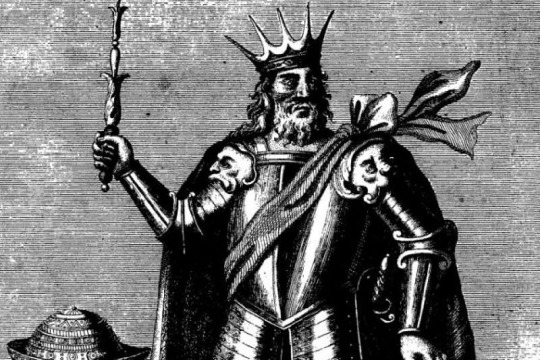
Brian Boru was an Irish king who lived from 941 to 1014. He is widely regarded as one of the most significant figures in medieval Irish history and is remembered for his leadership and military prowess in unifying a number of warring factions in Ireland and achieving a brief period of peace known as the “Golden Age”. His life and legacy have been the subject of much academic research and debate, with historians differing on many points regarding Boru’s life, achievements, and impact on early medieval Ireland. This paper will provide an overview of Brian Boru's life story, his major accomplishments, and how his legacy has been interpreted throughout history.
Brian Boru was born in 941 at Killaloe, County Clare in what is now modern day Ireland. He was of Dalcassian origin, descended from Conmhaícne Mara (the Clann Cian), a branch of the Uí Néill dynasty that ruled over much of northern Ireland during this period. From an early age he was groomed to be a leader within the Dalcassian confederation by his father Cennétig mac Lorcáin , who had become King of Thomond (modern day Munster) at a young age himself.
Boru's rise to power began with his appointment as chief councillor for Máel Sechnaill II mac Domnaill , High King of Ireland from 980-1002. During this period he gained control over much of Munster through military campaigns against rival clans and eventually became its king; he also gained influence over Leinster which enabled him to consolidate more power through political alliances. His rise to become High King began when Máel Sechnaill abdicated in 1002 upon having defeated several Viking invaders in battle; Brian was appointed High King soon after by the other Irish rulers.
youtube
Boru's reign as High King proved to be hugely successful for the people of Ireland; he managed to bring a period of relative peace between various warring factions throughout the country, earning him great respect amongst all those living there at the time. In addition to this, Brian also promoted Christianity; according to chroniclers such as Marianus Scotus , he built churches throughout Munster and had relics from Rome brought back to Armagh . Moreover, he worked hard to ensure that justice prevailed throughout his kingdom: according to historical records he held court hearings every two weeks where grievances could be heard without fear or favouritism .
However, not all aspects of Brian’s rule were seen positively; some historians have criticised him for being overly authoritarian in dealings with other Irish rulers who opposed him. Nonetheless it cannot be denied that Boru put forward ambitious plans for creating a united Ireland under one ruler which unsettled many experienced political leaders .
Ultimately Brian's reign ended with his death on Good Friday 1014 at Clontarf where he led an army against forces led by Sweyn Forkbeard , King of Denmark ; despite defeating many opposing forces it is believed that Boru died after being attacked by a group while praying near his tent during battle . Although it can be argued that Brian failed to achieve lasting peace in Ireland due to subsequent warfare after his death it cannot be denied that he made significant advances towards unity during his lifetime .
In conclusion Brian Boru has gone down in history as one of the most important figures in medieval Irish history; often seen as a heroic figure whose strong leadership qualities allowed him brief periods peace for those living within its borders . He is remembered for numerous achievements including consolidating power across various regions , promoting Christianity throughout Munster , enacting justice without fear or favouritism , and attempting unifying politics which set foundations for future generations . As such it could be argued that despite not achieving long lasting unification during his lifetime there are numerous aspects regarding Brian's rule which continue impacting upon modern day Ireland today both politically and culturally .
References:
1. Duffy S., 1993 The World Of The Gallowglass: Kings, Warlords And Warriors In Early Ireland 1250 - 1600 Dublin: Four Courts Press pp 24-25
2. Byrne FJ., 1973 Ages Of Invasions In Early Medieval History Dublin: Maunsel & Co Ltd pp 79-84
3. O Corrain D., 2000 A New History Of Ireland Volume I Oxford University Press pp 144-151
4. Edwards NF., 2011 A Military History Of Medieval Ireland Edinburgh University Press pp 175-180
5. Ó Corráin D., 1972 Prehistoric And Early Christian Ireland London: Thames & Hudson Ltd pp 26-31
8 notes
·
View notes
Note
Who were some famous Irish monarchs
Plenty though most as semi-legendary.
Gráinne O'Maille, Pirate Queen of Ireland
Niall of the Nine Hostages & High King of Ireland (my ancestor)
Domhnall ua Néill
Brian Ború
Máel Sechnaill mac Domnaill
Flann Sinna
Maedhbh
50 notes
·
View notes
Photo

Corre el año 994 después de Cristo. Se acerca el final del Siglo de Hierro. Los siete reinos anglosajones fueron unificados sesenta y siete años atrás por el rey Æthelstan para dar paso al Reino de Inglaterra. Æthelred el Malaconsejado es el actual rey de los ingleses. La fama del rey inglés nunca fue particularmente buena, y, tras una nefasta derrota en Maldon, ahora le paga tributo a los daneses. Al norte, en el Reino de Escocia (también llamado Reino de Alba), el rey Kenneth II vive en constante conflicto con enemigos tanto fuera como dentro de su propio territorio. Cruzando el mar, Máel Sechnaill mac Domnaill gobierna como rey supremo de Irlanda, a pesar de que su autoridad se ve desafiada desde hace años por Brian Boru, rey de Munster. Lo que ninguno de ellos sabe es que, hace un par de años, cuatro de los más poderosos magos y brujas de Gran Bretaña fundaron una escuela de magia y hechicería en las Tierras Altas escocesas. Desde la llegada del cristianismo a las islas británicas, la magia ya no tiene el mismo encanto que antes… todo lo contrario, en realidad. La Iglesia se enfrenta al antiguo paganismo en una guerra silenciosa y paciente, con el único fin de erradicarlo de una vez por todas. Las brujas y los magos son temidos y rechazados por una sociedad muggle que cada día los acepta menos. Es por esta razón que Godric Gryffindor, Helga Hufflepuff, Rowena Ravenclaw, y Salazar Slytherin se unieron para fundar Hogwarts. Si nadie más se preocupa por educar a los jóvenes magos y brujas en los conocimientos de la magia, todas sus tradiciones se perderán para siempre.
No obstante, no todos los que forman parte de la comunidad mágica consideran que la educación sea el único camino para lograr una convivencia pacífica. Muchos ni siquiera creen que una convivencia pacífica sea la solución. Los magos y brujas están atravesando un momento crucial en su historia; si no actúan pronto, su mundo dejará de existir. El Consejo de Magos está, sin duda, muy dividido en este aspecto. El viejo y sabio Archimago se enfrenta a una inoportuna división interna en un momento en el que necesitan estar más unidos que nunca. Pero ojalá todo se resumiera en eso. Con los reyes muggles luchando entre ellos y contra sus vecinos, la comunidad mágica todavía está a tiempo de aclarar sus ideas y pelear juntos contra cualquier adversidad. Sin embargo, existen fuerzas externas que no están dispuestas a darles esa chance. La Orden de Beorgan —también conocidos como los Cazadores Blancos—, una sociedad cristiana de guerreros y sacerdotes, lucha desde las sombras una guerra santa contra la brujería y aquellos que la practican. A diferencia de la posición pasiva de la Iglesia, los Cazadores Blancos dan guerra sin cuartel. La Orden de Beorgan no perdona ni toma prisioneros: quienes no mueren en batalla, son quemados en la hoguera. Tiempos violentos son estos que vivimos: si no es la guerra la que te mata, será entonces la enfermedad, o un asalto en el camino. Ten cuidado en los bosques salvajes, pues no sólo se esconden allí ladrones y asesinos: hay también toda clase de bestias fantásticas… y monstruos. Las manadas de hombres lobo son tantas y tan temibles como las de sus congéneres lupinos, por no hablar de los dragones que viven en las montañas. No obstante, por encima de todo esto se cierne un peligro mucho más aterrador: desde el Este está llegando una nación sin fronteras de seres que no están vivos… ni muertos. Los vampiros de las temibles leyendas eslavas han puesto sus oscuros ojos en una tierra que ha permanecido demasiado tiempo fuera de su control. Es hora de que las islas británicas se arrodillen ante la supremacía del Príncipe de la Noche.
TUMBLR
1 note
·
View note
Photo

Corre el año 994 después de Cristo. Se acerca el final del Siglo de Hierro. Los siete reinos anglosajones fueron unificados sesenta y siete años atrás por el rey Æthelstan para dar paso al Reino de Inglaterra. Æthelred el Malaconsejado es el actual rey de los ingleses. La fama del rey inglés nunca fue particularmente buena, y, tras una nefasta derrota en Maldon, ahora le paga tributo a los daneses. Al norte, en el Reino de Escocia (también llamado Reino de Alba), el rey Kenneth II vive en constante conflicto con enemigos tanto fuera como dentro de su propio territorio. Cruzando el mar, Máel Sechnaill mac Domnaill gobierna como rey supremo de Irlanda, a pesar de que su autoridad se ve desafiada desde hace años por Brian Boru, rey de Munster. Lo que ninguno de ellos sabe es que, hace un par de años, cuatro de los más poderosos magos y brujas de Gran Bretaña fundaron una escuela de magia y hechicería en las Tierras Altas escocesas. Desde la llegada del cristianismo a las islas británicas, la magia ya no tiene el mismo encanto que antes... todo lo contrario, en realidad. La Iglesia se enfrenta al antiguo paganismo en una guerra silenciosa y paciente, con el único fin de erradicarlo de una vez por todas. Las brujas y los magos son temidos y rechazados por una sociedad muggle que cada día los acepta menos. Es por esta razón que Godric Gryffindor, Helga Hufflepuff, Rowena Ravenclaw, y Salazar Slytherin se unieron para fundar Hogwarts. Si nadie más se preocupa por educar a los jóvenes magos y brujas en los conocimientos de la magia, todas sus tradiciones se perderán para siempre. No obstante, no todos los que forman parte de la comunidad mágica consideran que la educación sea el único camino para lograr una convivencia pacífica. Muchos ni siquiera creen que una convivencia pacífica sea la solución. Los magos y brujas están atravesando un momento crucial en su historia; si no actúan pronto, su mundo dejará de existir. El Consejo de Magos está, sin duda, muy dividido en este aspecto. El viejo y sabio Archimago se enfrenta a una inoportuna división interna en un momento en el que necesitan estar más unidos que nunca. Pero ojalá todo se resumiera en eso. Con los reyes muggles luchando entre ellos y contra sus vecinos, la comunidad mágica todavía está a tiempo de aclarar sus ideas y pelear juntos contra cualquier adversidad. Sin embargo, existen fuerzas externas que no están dispuestas a darles esa chance. La Orden de Beorgan —también conocidos como los Cazadores Blancos—, una sociedad cristiana de guerreros y sacerdotes, lucha desde las sombras una guerra santa contra la brujería y aquellos que la practican. A diferencia de la posición pasiva de la Iglesia, los Cazadores Blancos dan guerra sin cuartel. La Orden de Beorgan no perdona ni toma prisioneros: quienes no mueren en batalla, son quemados en la hoguera. Tiempos violentos son estos que vivimos: si no es la guerra la que te mata, será entonces la enfermedad, o un asalto en el camino. Ten cuidado en los bosques salvajes, pues no sólo se esconden allí ladrones y asesinos: hay también toda clase de bestias fantásticas... y monstruos. Las manadas de hombres lobo son tantas y tan temibles como las de sus congéneres lupinos, por no hablar de los dragones que viven en las montañas. No obstante, por encima de todo esto se cierne un peligro mucho más aterrador: desde el Este está llegando una nación sin fronteras de seres que no están vivos... ni muertos. Los vampiros de las temibles leyendas eslavas han puesto sus oscuros ojos en una tierra que ha permanecido demasiado tiempo fuera de su control. Es hora de que las islas británicas se arrodillen ante la supremacía del Príncipe de la Noche.
TUMBLR
2 notes
·
View notes
Text
#OTD in 999 – The Battle of Glenn Máma.
In December of the year 999, after celebrating Christmas on a march to Dublin, the Munster king Brian Boru won a major battle at Glen Máma near Dublin after being intercepted by the Norse of Dublin and the Leinstermen on Thursday 30 December. Only the Clonmacnois set of annals, pro-Úi Néill, mentions Máel Sechnaill (king of the Southern Uí Néill) as taking part in the expedition on Brian’s…

View On WordPress
5 notes
·
View notes
Photo

Corre el año 994 después de Cristo. Se acerca el final del Siglo de Hierro. Los siete reinos anglosajones fueron unificados sesenta y siete años atrás por el rey Æthelstan para dar paso al Reino de Inglaterra. Æthelred el Malaconsejado es el actual rey de los ingleses. La fama del rey inglés nunca fue particularmente buena, y, tras una nefasta derrota en Maldon, ahora le paga tributo a los daneses. Al norte, en el Reino de Escocia (también llamado Reino de Alba), el rey Kenneth II vive en constante conflicto con enemigos tanto fuera como dentro de su propio territorio. Cruzando el mar, Máel Sechnaill mac Domnaill gobierna como rey supremo de Irlanda, a pesar de que su autoridad se ve desafiada desde hace años por Brian Boru, rey de Munster. Lo que ninguno de ellos sabe es que, hace un par de años, cuatro de los más poderosos magos y brujas de Gran Bretaña fundaron una escuela de magia y hechicería en las Tierras Altas escocesas. Desde la llegada del cristianismo a las islas británicas, la magia ya no tiene el mismo encanto que antes... todo lo contrario, en realidad. La Iglesia se enfrenta al antiguo paganismo en una guerra silenciosa y paciente, con el único fin de erradicarlo de una vez por todas. Las brujas y los magos son temidos y rechazados por una sociedad muggle que cada día los acepta menos. Es por esta razón que Godric Gryffindor, Helga Hufflepuff, Rowena Ravenclaw, y Salazar Slytherin se unieron para fundar Hogwarts. Si nadie más se preocupa por educar a los jóvenes magos y brujas en los conocimientos de la magia, todas sus tradiciones se perderán para siempre. No obstante, no todos los que forman parte de la comunidad mágica consideran que la educación sea el único camino para lograr una convivencia pacífica. Muchos ni siquiera creen que una convivencia pacífica sea la solución. Los magos y brujas están atravesando un momento crucial en su historia; si no actúan pronto, su mundo dejará de existir. El Consejo de Magos está, sin duda, muy dividido en este aspecto. El viejo y sabio Archimago se enfrenta a una inoportuna división interna en un momento en el que necesitan estar más unidos que nunca. Pero ojalá todo se resumiera en eso. Con los reyes muggles luchando entre ellos y contra sus vecinos, la comunidad mágica todavía está a tiempo de aclarar sus ideas y pelear juntos contra cualquier adversidad. Sin embargo, existen fuerzas externas que no están dispuestas a darles esa chance. La Orden de Beorgan —también conocidos como los Cazadores Blancos—, una sociedad cristiana de guerreros y sacerdotes, lucha desde las sombras una guerra santa contra la brujería y aquellos que la practican. A diferencia de la posición pasiva de la Iglesia, los Cazadores Blancos dan guerra sin cuartel. La Orden de Beorgan no perdona ni toma prisioneros: quienes no mueren en batalla, son quemados en la hoguera. Tiempos violentos son estos que vivimos: si no es la guerra la que te mata, será entonces la enfermedad, o un asalto en el camino. Ten cuidado en los bosques salvajes, pues no sólo se esconden allí ladrones y asesinos: hay también toda clase de bestias fantásticas... y monstruos. Las manadas de hombres lobo son tantas y tan temibles como las de sus congéneres lupinos, por no hablar de los dragones que viven en las montañas. No obstante, por encima de todo esto se cierne un peligro mucho más aterrador: desde el Este está llegando una nación sin fronteras de seres que no están vivos... ni muertos. Los vampiros de las temibles leyendas eslavas han puesto sus oscuros ojos en una tierra que ha permanecido demasiado tiempo fuera de su control. Es hora de que las islas británicas se arrodillen ante la supremacía del Príncipe de la Noche.
2 notes
·
View notes
Text
Dating Disney: The Sword in the Stone

As per a request, I’ll be examining Disney’s 1963 film The Sword in the Stone, based on T.H. White’s tetralogy The Once And Future King. In particular, the first book titled The Sword in the Stone, written in 1938. In the novel, Merlyn ages backwards through time and teaches Wart by transforming him into various animals to prepare him for this future as king.
The Mytho-History of Arthurian England
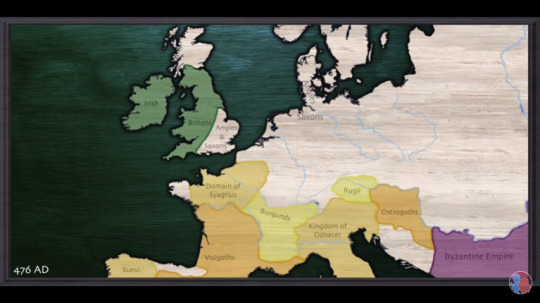
(image courtesy of Legends Summarized: King Arthur)
So, to keep the history lesson as short and non-boring as possible, let me try to give you the diet bullet points version of early English history. So, England used to be called Albion, and Rome ruled it for a time, even building Hadrian’s Wall to keep the Picts in Scotland out of their territory. Eventually, the Romans pulled out of Albion, and England was ruled by quasi-Roman Britons. Then, with the Fall of Rome on September 4th, 476 AD the Medieval period officially began (yep, the Middle Ages is a Virgo) and England was later sacked and partially conquered by the Angles and Saxons sailing in from the Jutlands in Germania. The Britons were predominantly Celtic, while the Angles and Saxons were Germanic. The Angles and Saxons eventually overtook England, resulting in Anglo-Saxon (aka Old English) to become the official language of England. Don’t worry though, they got what was coming to them in 1066 when William the Conqueror came from Normandy, France, and kicked the Anglo-Saxons out of power and French-speaking rulers had power over England for the rest of the Medieval period. This is also why French names for things are the fancier or more classy words for something. Simple words came from Anglo-Saxon while “fancy” words used by the ruling class come from French. Which is why it’s more “fancy” to call yourself intelligent instead of smart.

So, how does this all pertain to Arthurian Myth? Well, the roots of Arthurian Legend supposedly come from Welsh folklore. One need only look at some key players’ names, such as Guinevere’s original name Gwenhwyfar. Arthur is also frequently referred to as King of the Britons, which is important to remember that the Britons did not refer to the land, but rather to the Celtic peoples living in England before the Anglo-Saxon incursion. So, as a mythos, Arthur has his roots in Welsh-speaking Celtic origins as a Pseudo-mythic king. This is actually not uncommon in Celtic culture, as Ireland has a long and proud history of High Kings of Ireland that very likely never existed, claiming to be ruled from 1514 BCE - 841 AD by legendary mythic kings of Ireland, with the first actual historical High King of Ireland not appearing until 846 AD with Máel Sechnaill I. Arthur’s wife, Guinevere, is supposedly descended from an important Roman family, and thus her marriage to Arthur could also be interpreted as the bond between the Britons and their status as quasi-Roman citizens.
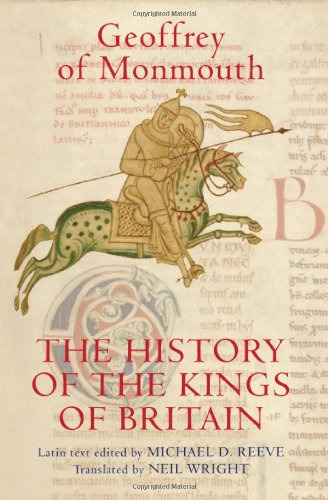
The idea of Arthur as an actual living breathing person first appears in the Annales Cambriae, which states that in the year 72 (c. 516 AD) Arthur won the battle of Baddon, and in the year 93 (c. 537 AD) Arthur and Mordred fell in the Battle of Camlann and there was death in Britain and Ireland. The Annales Cambriae were written around the middle of the 900s AD, so they’re already about 400 years late to the party for being trustworthy eyewitnesses to any shenanigans involving Artie. Arthur’s mythos began to be fleshed out more by Geoffrey of Monmouth’s Historia Regum Britanniae in the early 1100s, which lays a lot of the groundwork for Arthurian myth, introducing Guinevere, Merlin, and Caliburn, that would later be Frenchified into Excalibur. This is, however, not a book of Arthurian Legend so much as a largely fictitious account of all of the kings of England from Brutus, who settled England, up to Cadwaladr who ruled until 682 AD. This source is a large part of why people suspect Arthur might have been a real person, as he was essentially included in a textbook of England’s kings. There were later stories and updates to the tradition, but the last version came from Thomas Malory’s addition to the Arthurian Mythos in Le Morte d’Arthur at the end of the Medieval Period in 1485. Which also means that yes, Arthurian Legend actually spans the entire breadth of the Medieval Period. From the Fall of Rome in 476 to the end of the War of the Roses in 1485. Le Morte d’Arthur is the most famous version of Arthurian legend, and served as the major inspiration for T.H. White’s Once and Future King. The key feature we’re focused on is that like Le Morte d’Arthur, Arthur was taken from Uther and Igerna and raised by Sir Ector in the country-side until such a time that he pulled the Sword in the Stone, and was deemed the one true King of England.
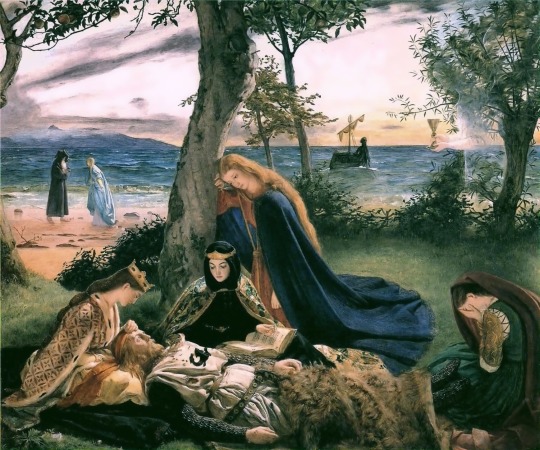
So, if Arthur was based on a real person, he was probably a quasi-Roman Briton living in the 6th century, and fighting against the Scandinavian invaders. However, there’s also a reason for Arthur to not have existed. The Anglo-Normans who ruled England from 1066 onward had a very low opinion of England. It was rainy, dreary, and full of sheep. It’s speculated that Arthur was hoisted up as a real life legend of British history to effectively give England a more interesting and glorious history and make itself look and/or feel more important, and possibly even to promote nationalist pride. Whether he was a real man turned into a legend, or completely made up, he still is important to English history even to this day. However, as the Arthurian myth grew up, Arthur became more and more distant from his Celtic roots, and it’s not hard to say that the Arthur in the Disney Film is probably an Anglo-Norman, rather than a Celtic Briton. The technology and fashions are simply far too advanced for the 6th century.
Merlin
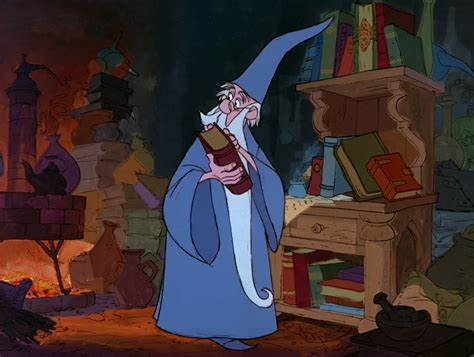
During his squirrel lesson, Merlin teaches Wart about the principles of gravity, referencing Newton’s Law of Universal Gravitation, first published in 1687. Upon meeting Wart, he also displays a Da Vinci flying contraption, and a wooden toy train engine. One might assume this is an anachronism, as Merlin also states while lecturing to Wart about his future “in these dark, uncertain medieval times”, and very firmly setting the film between 476 - 1485 AD. However, in the source material, Merlin ages backwards through time. And in other accounts of the Arthurian mythos, Merlin is gifted with a perfect knowledge of the past and future, making him essentially omniscient. The movie takes this a step further, as he not only sees into the future, but can travel through time as well. So, it’s perfectly valid for him to spout off knowledge and lessons that mankind would not discover for centuries afterward. We also see in Merlin’s possession a great number of books. This is important because in the medieval period, books were incredibly valuable, as they had to be written and copied by hand, and were so valuable that libraries chained them to the wall to keep them from being stolen. However, the sheer volume of his collection suggests that the printing press may have been invented, and thus, the film taking place after 1439. However, Merlin’s ability to travel through time makes his ownership of books hard to discern, as he could have easily brought those books back from later time periods.
Fashion
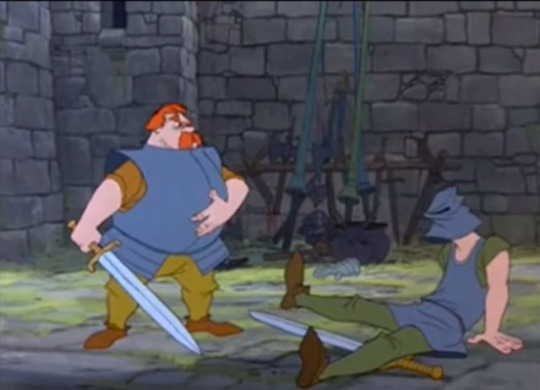
We see Sir Ector wearing faulds under his cuirass. Faulds are strips of plate armor tied at the hip to protect the hip from harm, looking something akin to skirting. Faulds first appeared in 1370. Sir Kay is wearing a Great Helm, noted for its very bucket-like shape, worn from the late 12 to 14th centuries.

However, during the fish lesson, Merlin takes cover inside of what appears to be an Armet helmet, developed in the 15th century. Which means that either Merlin found a helmet from the future, or Kay is training in a century old helmet. Which is why you can’t just throw medieval stuff willy-nilly onto the screen. the Medieval Period covers 1,009 years.
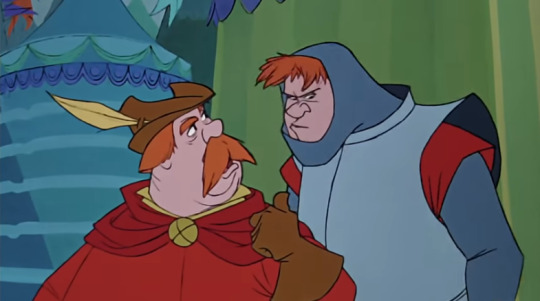
Toward the end of the film, we see Sir Ector wearing a Bycocket, a unisex hunting hat preferred by the nobility of the 13th and 14th centuries.
Culture
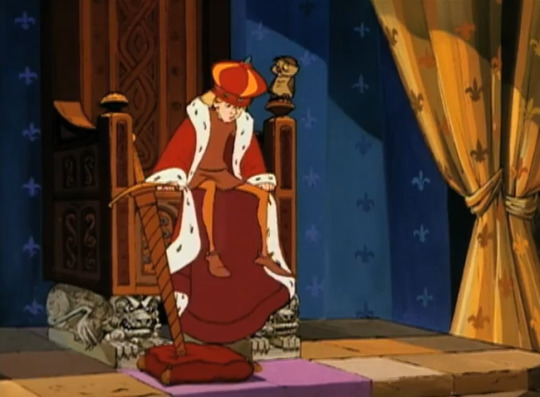
We can see in Arthur’s throne room the Fleur-de-Lis, a symbol of French royalty. The symbol emerged as a symbol of French royalty in the late 13th century. In England, the Fleur-de-lis was used in the royal standard for the Plantagennet family, which ruled England from the Norman Invasion of William the Conqueror in 1066 until Henry Tudor won the War of the Roses in 1485. The Fleur-de-lis was used in the Plantagenet standard beginning in the 13th century. Merlin also specifies teaching Wart English, Latin, and French. As the Plantagenet family were Anglo-Normans, they all spoke French, and all of the nobility also spoke French. Having Wart learn French would allow him to converse with his royal court, English with his subjects, and Latin with his faith. These three languages would be the most vital tools of an English king in this period to rule justly and to hear the voices of all of his subjects. Too bad the Plantagenets were notorious for not speaking a lick of English. Most of the nobility didn’t. The Peasants and the Aristocracy didn’t even speak the same language, making the gap between the classes wider. However, during the 13th century, the French language finally began to take a backseat to English among the royal court, and the Hundred Years War between England and France (1337-1453) bolstered nationalist pride for the English language among the ruling elite. By the end of the 15th century, English had finally become the mother tongue of the English nobility. So, young Wart living in the 13th or 14th century would certainly have a reason to learn English as an English King.
Conclusion

For the most part, like other Medieval-based movies from older Disney, they didn’t do enough research to really pin-point a clear time period. The movie sort of wants to be in this nebulous timeless part of England’s mytho-history, so I’m really left with guessing a time period based on the general clothing, look, and feel of the setting, which feels like it could be set at the same time or even slightly earlier than Sleeping Beauty. The most things seem to line up with a late 13th, early 14th century setting. So, I’ll conclude that we’re slightly ahead of the Italian Renaissance, as Arthur Plantagenet takes up the English Throne. In fact, this also aligns with the real life history of England. In 1377, Edward III died after his eldest son, causing a succession crisis that sparked the War of the Roses. Likewise, the Sword in the Stone was used in the film to prevent a war for succession after the King of England died without a known heir. The parallels line up nicely enough that since Disney tends to run on its own logic that the succession of King Arthur would likely be their alternate history solution to the War of the Roses. More still, after Edward III died, 12-year-old Boy King Richard II was chosen to succeed Edward III, and his uncles who had been passed over for the crown opposed his rule. Likewise, Wart is 12 in the film, becomes king, and Arthur did canonically have to fight dissenters who opposed his claim to the crown. So, Wart is, according to this movie, a very nice stand-in for Richard II of England. Both Arthur and Richard II were also eventually foisted from his throne by power-hungry relatives. In Arthur’s case, his nephew or illegitimate son Mordred tries to usurp his throne and both kill each other in the process. In Richard’s case, he was deposed by his cousin Henry IV in 1399. They even ruled for about the same amount of time, as Arthur became king canonically in 512 at the age of 15, and died in 537 at the age of 40. Arthur ruled for 25 years, and Richard ruled for 22. So that’s an admittedly uncanny series of parallels. So, Wart is the Disney Alternate History version of Richard II the Boy King of England. (reign 1377-1399) And to think, the same king helped inspire the sadistic boy king Joffrey Baratheon in Game of Thrones.
Setting: England Kingdom: The Kingdom of England (927 - 1707 AD) House: House Pendragon/House Plantagenet (1066-1485) Era: the War of the Roses Period: The Late Middle Ages (1250 - 1500 AD) Year: 1377 AD Historic Counterpart: Richard II of England (1377-1399) Language: Middle English (1150-1500 AD) Anglo-Norman French (1066-1500 AD) Medieval Latin (927 - 15th century)
#dating disney#disney#the sword in the stone#th white#t.h. white#wart#king arthur#arthurian legend#excalibur#sir kay#sir ector#the once and future king#merlin#plantagenet#medieval#medieval history#history#middle ages#annales cambriae#geoffrey of monmouth#thomas malory#le morte d'arthur#the volgate cycle#guinevere#lancelot#lady of the lake#briton#celts#celtic#anglo-saxon
460 notes
·
View notes
Link
Emer answered, “He proposed marriage.”
Maél laughed, “To who? Everyone knows he doesn't like women.”
Emer was blushing. Her mother understood what she wanted to say.
“He wants to marry me.”
“Impossible. I’ll never allow it. It's an offense to think I would marry my last daughter to a monster.”
“Well, you allowed your first daughter to marry Cerball. Maybe, it's a good option, father.”
Máel couldn’t regret more about his decision to marry his eldest daughter to a man that would come to be his enemy. “Never. Only if I die. Can you imagine the terrible things he could do to you? They are not trustworthy. We must get rid of those pagans!”
“You might be right that we can't trust them. Yet, the only monster I saw there was uncle. He tried to slap me. Ivar didn't allow it.”
Landa was quiet, watching her daughter speaking. She was surprised that Emer was defending the Northman from her father’s wrath.
“So now you call the foreigner by his name. What happened there?”
#vikings#vikings fanfic#fanfictions#viking age#9th century AD#vikings in ireland#The annals of ulster#annals of ulster#emer x ivar#ivar x emer#Ivar x Original Character#Ivar x OC#vkivar#Ivar The Boneless#ivar ragnarsson#otp: the fox and the maiden fair#The Fox and The Maiden Fair#Máel Sechnaill mac Máele Ruanaid#Cerball mac Dúnlainge#archive of our own
10 notes
·
View notes
Text
Events 7.10 (before 1900)
138 – Emperor Hadrian of Rome dies of heart failure at his residence on the bay of Naples, Baiae; he is buried at Rome in the Tomb of Hadrian beside his late wife, Vibia Sabina. 645 – Isshi Incident: Prince Naka-no-Ōe and Fujiwara no Kamatari assassinate Soga no Iruka during a coup d'état at the imperial palace. 988 – The Norse King Glúniairn recognises Máel Sechnaill mac Domnaill, High King of Ireland, and agrees to pay taxes and accept Brehon Law; the event is considered to be the founding of the city of Dublin. 1086 – King Canute IV of Denmark is killed by rebellious peasants. 1212 – The most severe of several early fires of London burns most of the city to the ground. 1460 – Richard Neville, 16th Earl of Warwick, defeats the king's Lancastrian forces and takes King Henry VI prisoner in the Battle of Northampton. 1499 – The Portuguese explorer Nicolau Coelho returns to Lisbon after discovering the sea route to India as a companion of Vasco da Gama. 1512 – The Spanish conquest of Iberian Navarre commences with the capture of Goizueta. 1519 – Zhu Chenhao declares the Ming dynasty's Zhengde Emperor a usurper, beginning the Prince of Ning rebellion, and leads his army north in an attempt to capture Nanjing. 1553 – Lady Jane Grey takes the throne of England. 1584 – William I of Orange is assassinated in his home in Delft, Holland, by Balthasar Gérard. 1645 – English Civil War: The Battle of Langport takes place. 1778 – American Revolution: Louis XVI of France declares war on the Kingdom of Great Britain. 1789 – Alexander Mackenzie reaches the Mackenzie River delta. 1806 – The Vellore Mutiny is the first instance of a mutiny by Indian sepoys against the British East India Company. 1832 – U.S. President Andrew Jackson vetoes a bill that would re-charter the Second Bank of the United States. 1850 – U.S. President Millard Fillmore is sworn in, a day after becoming president upon Zachary Taylor's death. 1877 – The then-villa of Mayagüez, Puerto Rico, formally receives its city charter from the Royal Crown of Spain. 1882 – War of the Pacific: Chile suffers its last military defeat in the Battle of La Concepción when a garrison of 77 men is annihilated by a 1,300-strong Peruvian force, many of them armed with spears. 1883 – War of the Pacific: Chileans led by Alejandro Gorostiaga defeat Andrés Avelino Cáceres's Peruvian army at the Battle of Huamachuco, hastening the end of the war. 1890 – Wyoming is admitted as the 44th U.S. state.
1 note
·
View note
Text
High and Low
Tucked away in a corner of the grounds of Kinnitty Castle, County Offaly is this sandstone High Cross, thought originally to have stood not far away on the site of a monastery at Drumcullen. An inscription on the south face of the base records that it was commissioned by Máel Sechnaill, High King of Ireland (846-62) while on the other side the cross is noted as being the work of ‘Colman’. The…

View On WordPress
0 notes